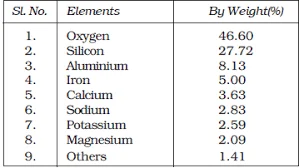![]() May 2, 2024
May 2, 2024
![]() 13719
13719
![]() 0
0
Minerals are natural substances with specific chemical and physical properties, often found in ores. They occur in various forms, such as in cracks of rocks, sedimentary layers, placer deposits, and ocean waters. Around the globe, different regions specialize in producing specific minerals, contributing to the world’s mineral supply.


| Must Read | |
| Current Affairs | Editorial Analysis |
| Upsc Notes | Upsc Blogs |
| NCERT Notes | Free Main Answer Writing |
| Related Articles | |
| Indian Geography: Location and Overview | MINERALS AND ENERGY RESOURCES OF INDIA |
| Types Of Rocks: Igneous, Sedimentary, Metamorphic | Iron Ore: Types, Distribution, Uses, Mines in India |
<div class="new-fform">
</div>

Latest Comments